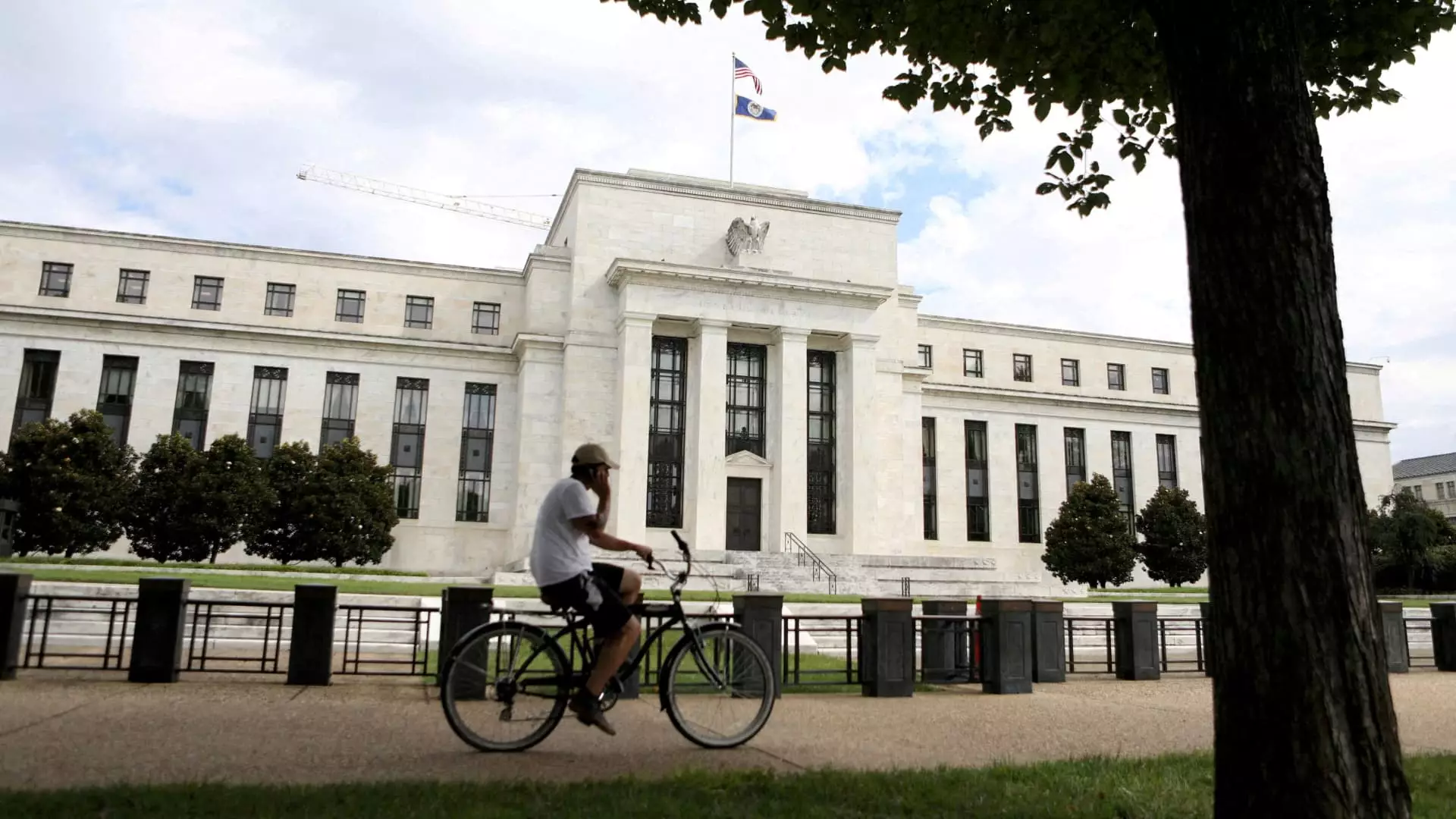In the intricate dance between economic forces and political influences, the Federal Reserve stands as a pillar of independence. Yet, this autonomy faces immense scrutiny, particularly in times of fluctuating job reports and inflation concerns. Recently, the Fed resisted pressure from President Donald Trump, who vocally criticized the central bank via social media, insisting that it should cut interest rates in response to perceived inflation reductions. This disconnect highlights a persistent issue in American governance: can an independent entity effectively navigate the political climate while maintaining its primary objective of economic stability?
The reality is that the Fed must maintain its distance from political players to uphold its credibility. Federal Reserve Chair Jerome Powell’s consistent assertion that monetary policy must remain apolitical reflects this essential truth. Yet, the president’s calls for lower rates reveal a dangerous intersection where political motivations threaten to undermine robust economic policymaking. An economically literate populace, especially amidst rising prices and tumultuous trade agendas, should question the implications of intertwining these spheres.
Impact of Tariffs on Economic Forecasts
Amidst the economic turbulence spawned by new trade policies under Trump’s administration, the specter of tariffs looms heavily over the American household budget. Increased costs from imposed tariffs on imported goods could inadvertently heighten inflation, complicating an already complex economic landscape. As countless economists warn, everyday consumers typically bear the brunt of these higher prices. Eugenio Aleman, the chief economist at Raymond James, accurately summarizes the sentiment: “Consumers are always the ones who pay the price.”
The effects of tariffs extend beyond immediate inflation concerns. They create a ripple effect throughout the economy, where uncertainty reigns supreme. Greg McBride, chief financial analyst at Bankrate, posits that such unrest may ultimately lead the Fed to adopt a cautious stance on rate changes, keeping them firmly on the sidelines. In this environment, consumers are trapped, facing the dual burden of high prices and escalating borrowing costs. It’s as if the economic landscape is a game of chess, where one poorly made political move cascades into a series of detrimental outcomes for the average American.
The Pain of High Borrowing Costs
For many Americans, high borrowing costs represent a continuing nightmare. The federal funds rate significantly impacts interest rates on loans, affecting everything from auto purchases to credit card debt. Currently, many individuals are held hostage by high average credit card interest rates that hover just above 20%—a staggering number indicative of broader economic anxieties. Banks, cautious in the face of uncertainty, often react by tightening their belts, which translates to increased rates for consumers in need of credit.
This situation proves particularly precarious for those already grappling with high living expenses and a competitive job market. As rates remain elevated, many simply cannot catch a break. The modest decrease in mortgage rates has done little to revive the housing market. Prospective homebuyers find themselves stymied, unable to benefit meaningfully from such declines, while auto loan rates remain similarly resistive to change. Trade policies and tariffs rather than traditional factors like supply and demand dictate these complications.
Debt Scenarios for Students and Casual Savers
Navigating the economic landscape is equally distressing for students and recent graduates burdened by student loans. Although federal student loan interest rates remain fixed, the burdens grow heavier each day as economic headwinds lead to fewer options for loan forgiveness. Undergraduates borrowing for the upcoming academic year will see rates increase—adding yet another layer of stress in what is already a precarious journey through higher education.
Conversely, amidst the discomfort lay some saving opportunities. High-yield savings accounts, offering attractive returns, serve as a necessary financial refuge—a beacon of hope in an otherwise murky financial seas. For those willing to exercise financial discipline, high-interest savings can make a difference amidst grinding inflation and increased living costs. However, as is often the case, many are reluctant to maintain robust emergency savings amid a climate of anxiety and uncertainty.
A Call for Pragmatism in Policy
Amidst swirling market dynamics, the unrelenting tide of consumer frustrations mandates a pragmatic approach to both policy and consumer behavior. While the Federal Reserve does not possess the power to directly dictate deposit rates, its decisions create an intricate dance of financial consequences for average Americans. The current climate of uncertainty calls for vigilance and discernment, as consumers need to focus on enhancing their emergency savings and tackling high-interest debt head-on.
Ultimately, the intersection of interest rates, economic stability, and consumer realities paints a complex picture that necessitates thoughtful engagement from both policymakers and the populace. The unfortunate truth remains: the fallout from decisions made in boardrooms or government offices resonates deeply within homes and communities across the nation. It’s high time to reconsider how economic policies are framed and implemented, aligning them more closely with the lived experiences of all Americans striving for a brighter financial future.


Leave a Reply